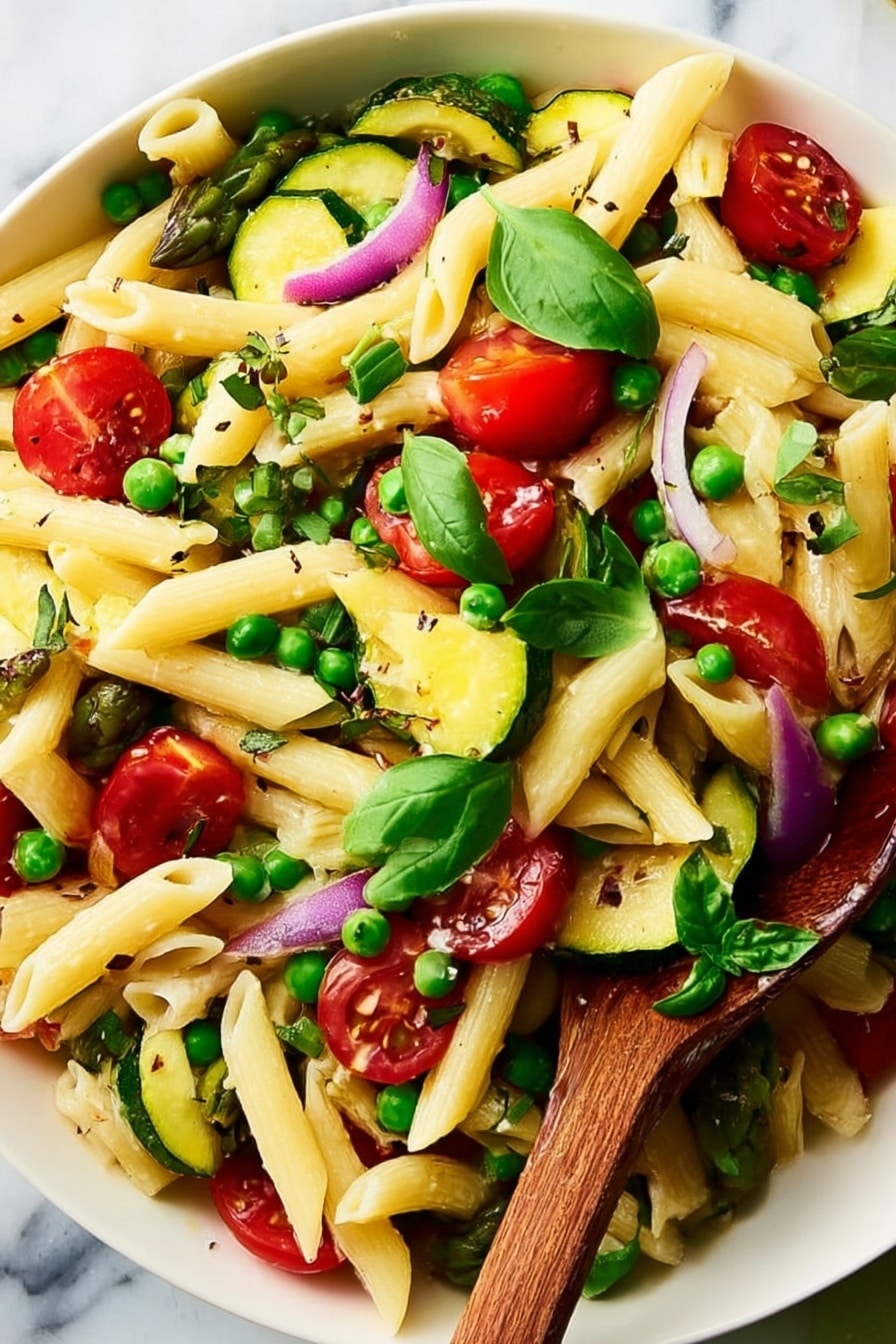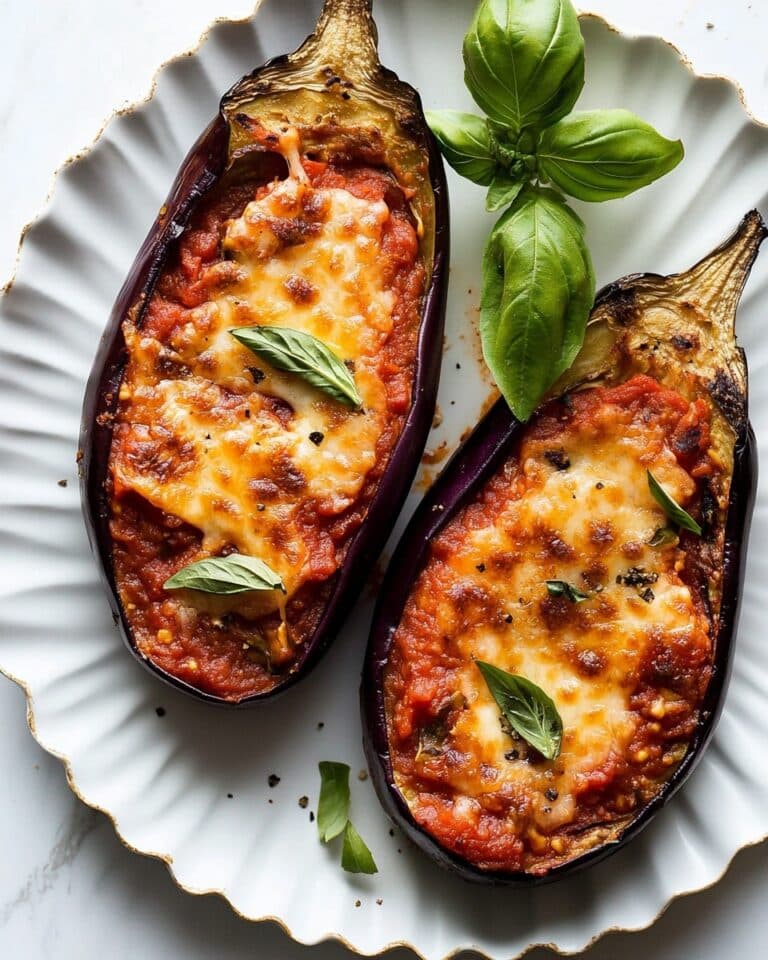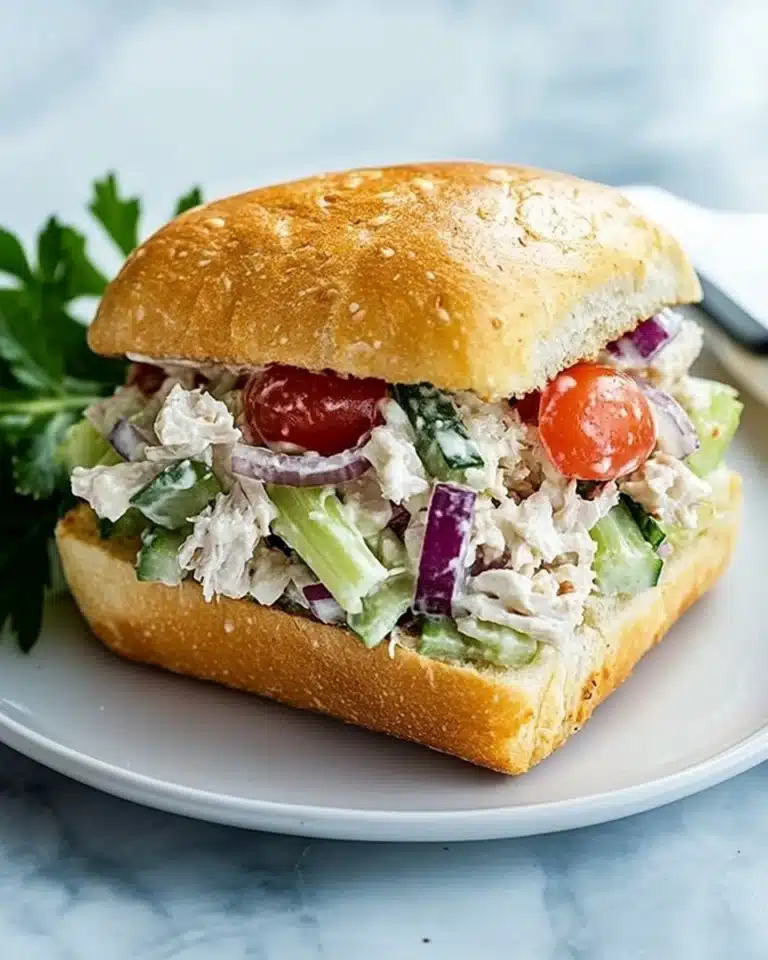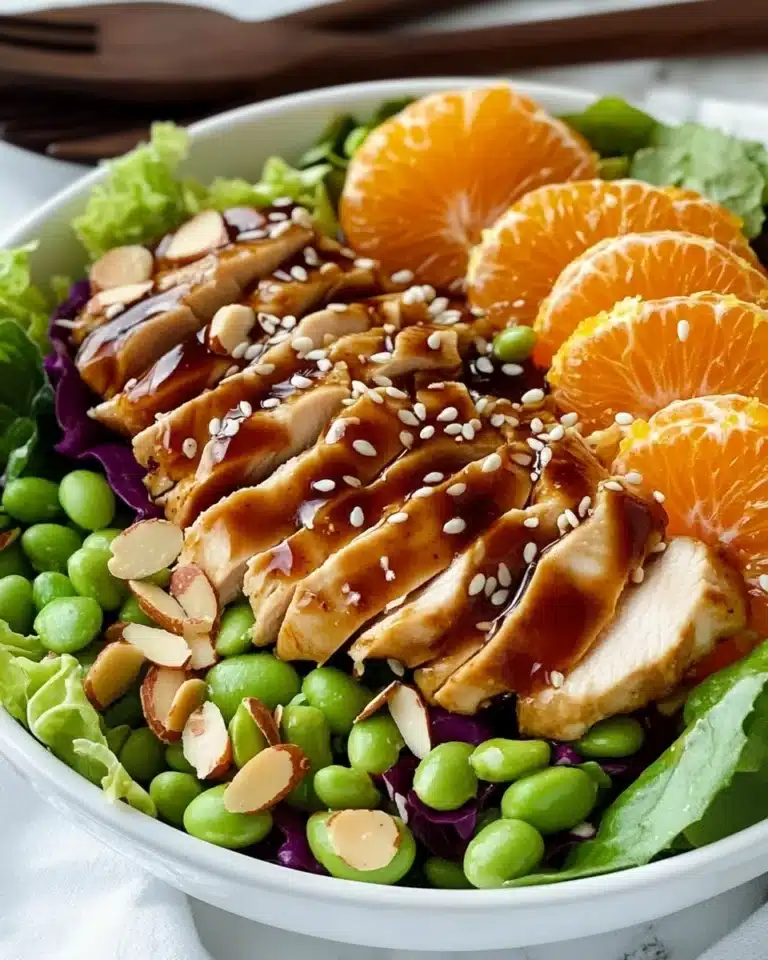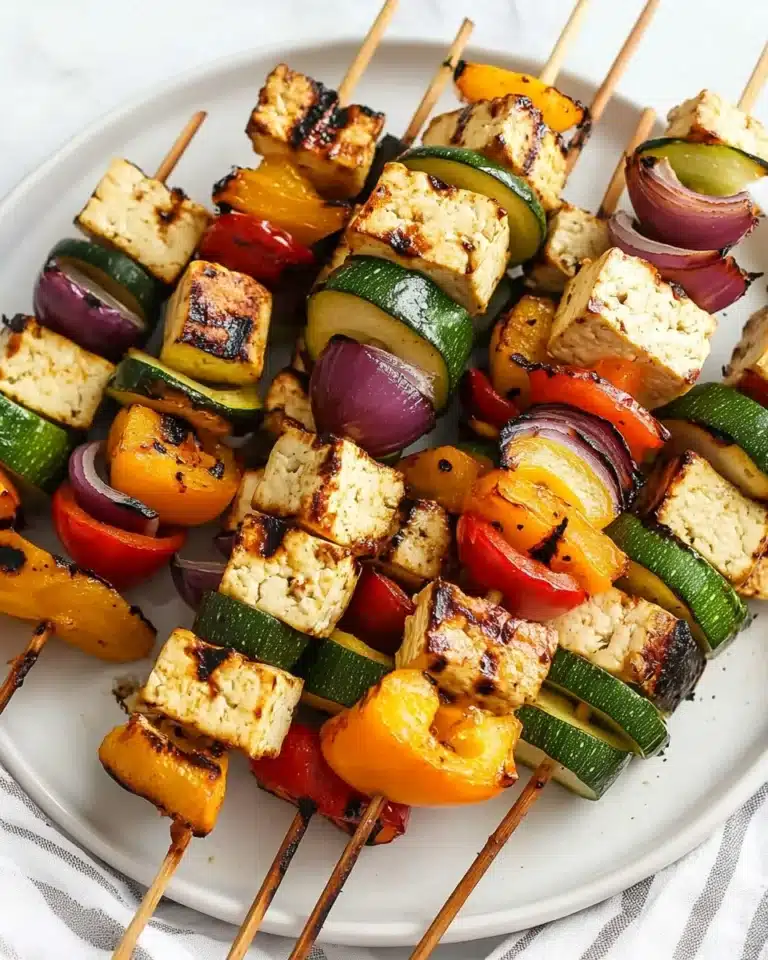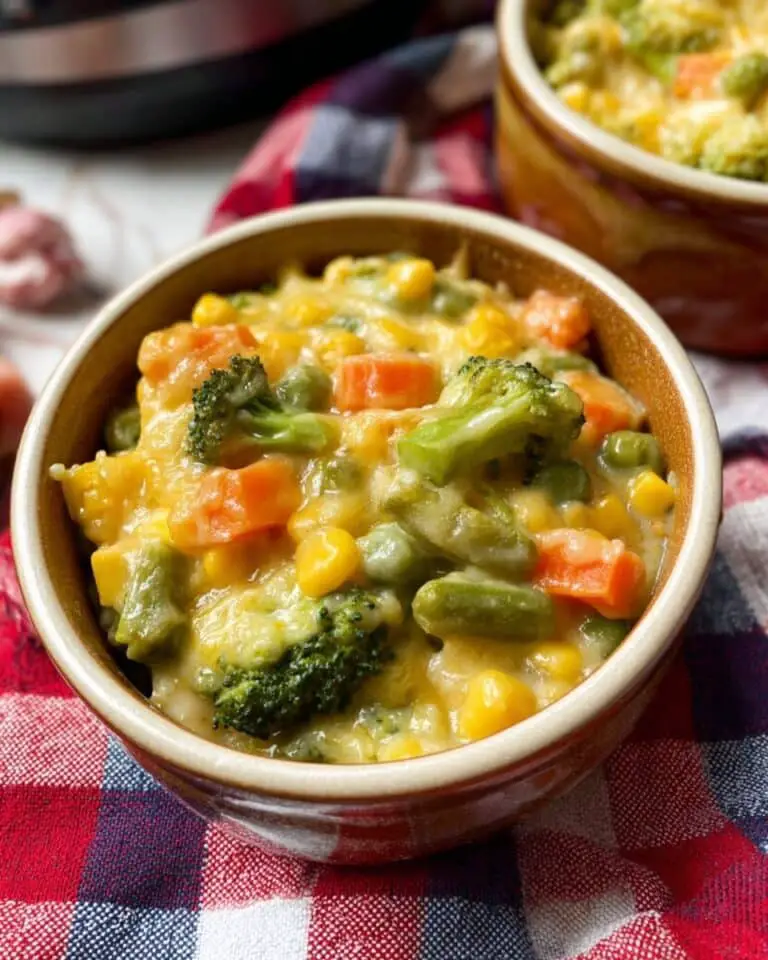If you’re craving a vibrant, fresh, and downright delightful pasta dish, you’re going to adore this Fresh Pasta Primavera with Veggies Recipe. It’s one of those meals that feels like a celebration of spring and summer all on one plate. I’ve made it countless times, and each time it dazzles with those bright, colorful veggies and the bright zing from fresh lemon juice. Stick with me, and I’ll share all my best tips so you can nail this fresh pasta primavera every time you cook it!
Why You’ll Love This Recipe
- Bright & Fresh Flavors: The lemon juice and fresh herbs bring such a lively taste that makes every bite refreshing.
- Loaded with Veggies: You’ll love the healthy mix of zucchini, squash, asparagus, peas, and tomatoes that make this pasta as nutritious as it is tasty.
- Simple & Quick to Make: Perfect for weeknights when you want something wholesome but don’t want to spend hours in the kitchen.
- Versatile & Easily Customizable: You can tweak it easily to your liking with different herbs or veggies, so it never feels boring.
Ingredients You’ll Need
The blend of fresh and frozen veggies here really works together to create a beautiful medley of textures and tastes. Plus, the pecorino cheese adds just the right salty kick, and the lemon juice brightens everything up perfectly. When shopping, look for fresh, crisp veggies to really make this dish shine.

- Penne pasta: I love using penne because its shape holds the sauce nicely, but feel free to swap with your favorite pasta type.
- Extra-virgin olive oil: A good quality olive oil makes a big difference in flavor here.
- Garlic cloves: Sliced garlic offers subtle bursts of flavor without overpowering the veggies.
- Yellow squash: Offers sweetness and a lovely color contrast to the zucchini.
- Zucchini: Essential for a fresh primavera — thin half-moons cook quickly and stay tender-crisp.
- Asparagus: Adds a nice crunch and a hint of earthiness.
- Cherry tomatoes: Their sweetness balances the savory elements.
- Red onion: Thin slices add mild sharpness and a different texture.
- Sea salt: I always use sea salt here for its clean flavor.
- Frozen peas: Thaw them beforehand for that pop of sweetness and fresh green color.
- Pecorino cheese: Grated pecorino provides a salty, tangy boost that elevates the whole dish.
- Fresh lemon juice: Key for that fresh zing — I prefer freshly squeezed for best results.
- Red pepper flakes: Just a pinch adds a subtle heat that wakes everything up.
- Fresh basil leaves: The star herb, offering aromatic freshness.
- Fresh tarragon (optional): I highly recommend trying this if you can find it — it lends a lovely anise-like note that’s out of this world.
- Freshly ground black pepper: Adds just the right amount of spice and depth.
Variations
Over time, I’ve discovered that this Fresh Pasta Primavera with Veggies Recipe is wonderfully adaptable — feel free to make it your own by mixing in whatever veggies or herbs you love. Let your pantry and season inspire you!
- Seasonal Veggie Swap: I’ve swapped in bell peppers, snap peas, or even baby spinach with great success, depending on what’s fresh and available.
- Protein Addition: Adding grilled chicken or shrimp can turn this into a heartier meal that my family especially enjoys for dinner.
- Gluten-Free Option: Using gluten-free pasta works well, just cook according to package instructions since they vary.
- Herb Variations: Besides basil and tarragon, I like mixing in fresh parsley or chives for a different flavor twist.
How to Make Fresh Pasta Primavera with Veggies Recipe
Step 1: Cook the Pasta to Al Dente Perfection
Bring a large pot of salted water to a rolling boil — I like to add enough salt to make the water taste like the sea because it seasons the pasta from the inside out. Cook the penne according to package directions until al dente, usually about 10 minutes, so it has a tiny bit of bite. Drain the pasta and immediately toss it with a drizzle of olive oil. This helps keep the noodles from sticking together while you prepare the sauce. Trust me, skipping this step can lead to frustrating clumps!
Step 2: Sauté the Vegetables Until Tender-Crisp
Heat two tablespoons of extra-virgin olive oil in a large, deep skillet over medium heat. Once shimmering, add the sliced garlic and sauté for just about 30 seconds. You want it fragrant, not browned or bitter. Then toss in the yellow squash, zucchini, chopped asparagus, cherry tomatoes, and thinly sliced red onion along with a teaspoon of sea salt and several grinds of black pepper. Sauté everything together for 3 to 4 minutes. The goal here is tender-crisp — you want the veggies to be soft enough to enjoy but still have that satisfying snap. Overcooking can lead to mushy texture, so keep a close eye and adjust your heat if things start to soften too quickly.
Step 3: Combine Pasta, Peas, Cheese, Lemon, and Herbs
Now for the magic! Add the cooked pasta and thawed peas directly to the skillet with your veggies. Sprinkle in the ¾ cup grated pecorino cheese and pour in three tablespoons of fresh lemon juice. This is what gives the dish such a fresh, tangy brightness — don’t skip the fresh lemon juice, it’s a game changer. Add a pinch of red pepper flakes to wake up your taste buds with a subtle heat. Toss everything gently but thoroughly to combine. Stir in the fresh basil and tarragon (if you’re using it) at the last minute to preserve their vibrant flavor and color. Taste and adjust seasoning if needed — sometimes a little more salt or pepper pulls it all together.
Step 4: Garnish and Serve Immediately
Dish out your fresh pasta primavera into bowls or plates, garnish with a few extra basil leaves, and maybe a light drizzle of olive oil if you’re feeling fancy. Serve it as soon as possible to enjoy the veggies at their best texture and the pasta at its perfect warmth.
Pro Tips for Making Fresh Pasta Primavera with Veggies Recipe
- Don’t Overcook the Veggies: I learned early on that overcooked veggies make the dish heavy—aim for tender-crisp for brightness and texture.
- Use Fresh Lemon Juice: Bottled lemon juice just doesn’t deliver the same fresh zing that wakes this dish up beautifully.
- Drizzle Pasta with Olive Oil Right Away: Toss pasta quickly after draining with olive oil so it doesn’t clump and gets those lovely glossy noodles.
- Add Herbs Last: Incorporate fresh basil and tarragon at the end to preserve their vibrant flavor and color — no cooked-out herbs here!
How to Serve Fresh Pasta Primavera with Veggies Recipe
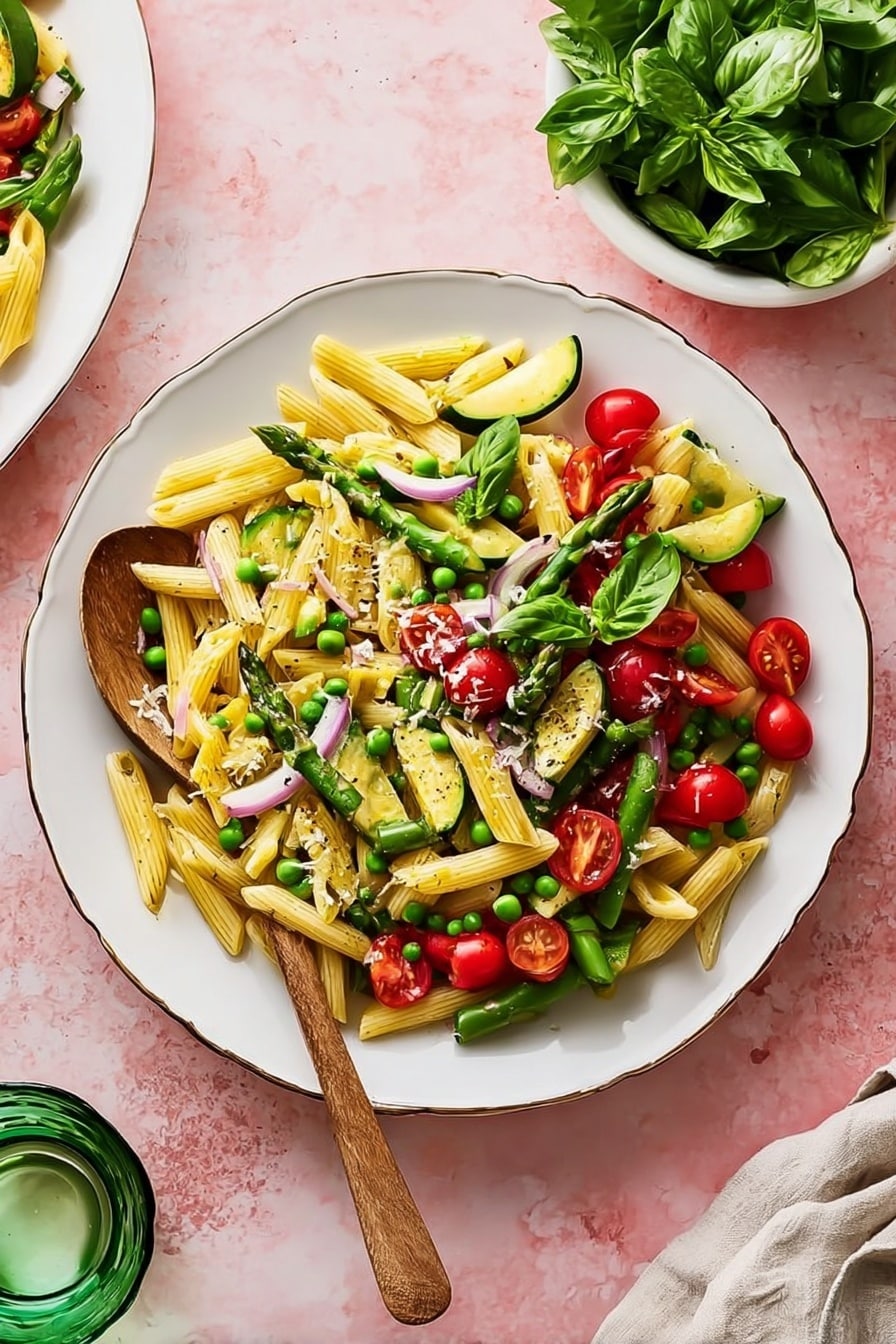
Garnishes
For garnishes, I usually stick with fresh basil leaves and a sprinkle of extra pecorino cheese. Sometimes I like to add a few crunchy toasted pine nuts for texture or a little lemon zest on top for an extra pop of citrus aroma. These simple touches take the dish from wonderful to wow-worthy.
Side Dishes
This Fresh Pasta Primavera pairs beautifully with a crisp green salad tossed in lemon vinaigrette or a rustic garlic bread to soak up every bit of those fresh veggie juices. For a heartier meal, roasted chicken or grilled fish make excellent companions.
Creative Ways to Present
I once served this pasta in shallow white bowls garnished with edible flowers and microgreens for a dinner party, and it looked stunning. You can also twist the presentation by layering it in a glass trifle dish for casual gatherings or plating it with a fresh herb bouquet on the side for an elegant touch.
Make Ahead and Storage
Storing Leftovers
I store leftover pasta primavera in an airtight container in the fridge for up to 3 days. Since the veggies can release a bit of water over time, I like to add a small drizzle of olive oil when reheating to freshen things up. Give it a good stir and it’s almost as good as freshly made.
Freezing
To be honest, I recommend enjoying this dish fresh since pasta and delicate veggies lose some texture after freezing. But if you need to freeze, flash cool the pasta and veggies separately, then freeze in portioned containers. Thaw overnight in the fridge before reheating gently on the stove.
Reheating
Reheat leftovers gently in a skillet over medium-low heat, adding a splash of water or broth if things seem dry. Microwave works too but watch the time to avoid soggy pasta. Adding fresh basil after reheating brightens the dish again.
FAQs
-
Can I use other types of pasta for this Fresh Pasta Primavera with Veggies Recipe?
Absolutely! While penne works great due to its shape, feel free to use fusilli, farfalle, or even spaghetti. Just adjust cooking times as needed and be sure to cook until al dente for the best texture.
-
Is this recipe suitable for vegetarians?
Yes! This fresh pasta primavera is naturally vegetarian. Just double-check your cheese is vegetarian-friendly if that’s important to you; some pecorino cheeses use animal rennet.
-
Can I prepare this dish ahead of time?
You can prep the veggies ahead, but I recommend cooking and combining everything just before serving for the freshest taste and best texture. Leftovers reheat well too.
-
What if I don’t have fresh tarragon?
No problem! Tarragon adds a lovely twist, but it’s optional. You can substitute with a little fresh parsley or omit it altogether if you don’t have it on hand.
-
How can I make this dish spicier?
Increase the amount of red pepper flakes to your liking or add a dash of freshly ground black pepper. For an added kick, toss in some chopped fresh chili or a splash of hot sauce right before serving.
Final Thoughts
Honestly, this Fresh Pasta Primavera with Veggies Recipe holds a special place in my heart — it’s the perfect way to celebrate the season’s bounty while keeping things light and fresh. Each bite feels like a burst of sunshine, and it’s always a hit when I make it for friends and family. I can’t wait for you to try this recipe yourself; I believe it’ll become a favorite in your kitchen, just like it is in mine. So grab those fresh veggies, get your pasta pot boiling, and let’s make some magic happen!
Print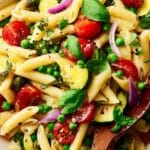
Fresh Pasta Primavera with Veggies Recipe
- Prep Time: 10 minutes
- Cook Time: 20 minutes
- Total Time: 30 minutes
- Yield: 4 servings
- Category: Main Dish
- Method: Stovetop
- Cuisine: Italian
- Diet: Vegetarian
Description
Pasta Primavera is a vibrant and fresh dish featuring al dente penne pasta tossed with a medley of sautéed seasonal vegetables including yellow squash, zucchini, asparagus, cherry tomatoes, and peas. Infused with garlic, fresh herbs like basil and optional tarragon, and finished with grated pecorino cheese and a bright splash of lemon juice, this light and flavorful meal is perfect for a quick spring or summer dinner.
Ingredients
Pasta
- 10 ounces penne pasta
Vegetables & Aromatics
- 2 tablespoons extra-virgin olive oil (plus more for drizzling)
- 4 garlic cloves (sliced)
- 1 yellow squash (sliced into thin half-moons)
- 1 zucchini (sliced into thin half-moons)
- 1 bunch asparagus (chopped into 1-inch pieces)
- 1 cup cherry tomatoes (halved)
- 1 cup thinly sliced red onion
- ½ cup frozen peas (thawed)
Seasonings & Garnishes
- 1 teaspoon sea salt
- 3 tablespoons fresh lemon juice
- Red pepper flakes (to taste)
- 1 cup fresh basil leaves (plus more for garnish)
- ¼ cup fresh tarragon (optional)
- Freshly ground black pepper (to taste)
Cheese
- ¾ cup grated pecorino cheese
Instructions
- Cook the Pasta: Bring a large pot of salted water to a boil. Add the penne pasta and cook according to the package instructions until al dente. Drain the pasta and toss it with a drizzle of olive oil to prevent sticking.
- Sauté the Vegetables: Heat 2 tablespoons of extra-virgin olive oil in a large, deep skillet over medium heat. Add the sliced garlic, yellow squash, zucchini, asparagus pieces, cherry tomatoes, sliced red onion, sea salt, and several grinds of freshly ground black pepper. Sauté the vegetables for 3 to 4 minutes until they become tender but still vibrant.
- Combine Pasta and Vegetables: Add the cooked pasta, thawed peas, grated pecorino cheese, fresh lemon juice, and a pinch of red pepper flakes to the skillet with the vegetables. Toss everything together gently to combine and allow the cheese to melt slightly.
- Add Fresh Herbs and Final Seasoning: Stir in the fresh basil leaves and the optional fresh tarragon. Taste the dish and adjust seasoning with additional salt, pepper, or red pepper flakes as desired.
- Serve and Garnish: Garnish the pasta primavera with extra fresh basil leaves and a light drizzle of olive oil before serving. Enjoy warm and fresh.
Notes
- This pasta primavera is best enjoyed fresh and warm, showcasing the vibrant flavors of seasonal vegetables.
- The addition of fresh tarragon is optional but highly recommended for an elevated herbal note.
- You can substitute pecorino cheese with Parmesan if preferred.
- For a vegan version, omit the cheese or use a dairy-free alternative.
- Be sure not to overcook the vegetables to maintain their texture and color.
Nutrition
- Serving Size: 1 serving (approx. 1/4 of recipe)
- Calories: 370 kcal
- Sugar: 5 g
- Sodium: 350 mg
- Fat: 12 g
- Saturated Fat: 4 g
- Unsaturated Fat: 7 g
- Trans Fat: 0 g
- Carbohydrates: 52 g
- Fiber: 6 g
- Protein: 13 g
- Cholesterol: 15 mg

